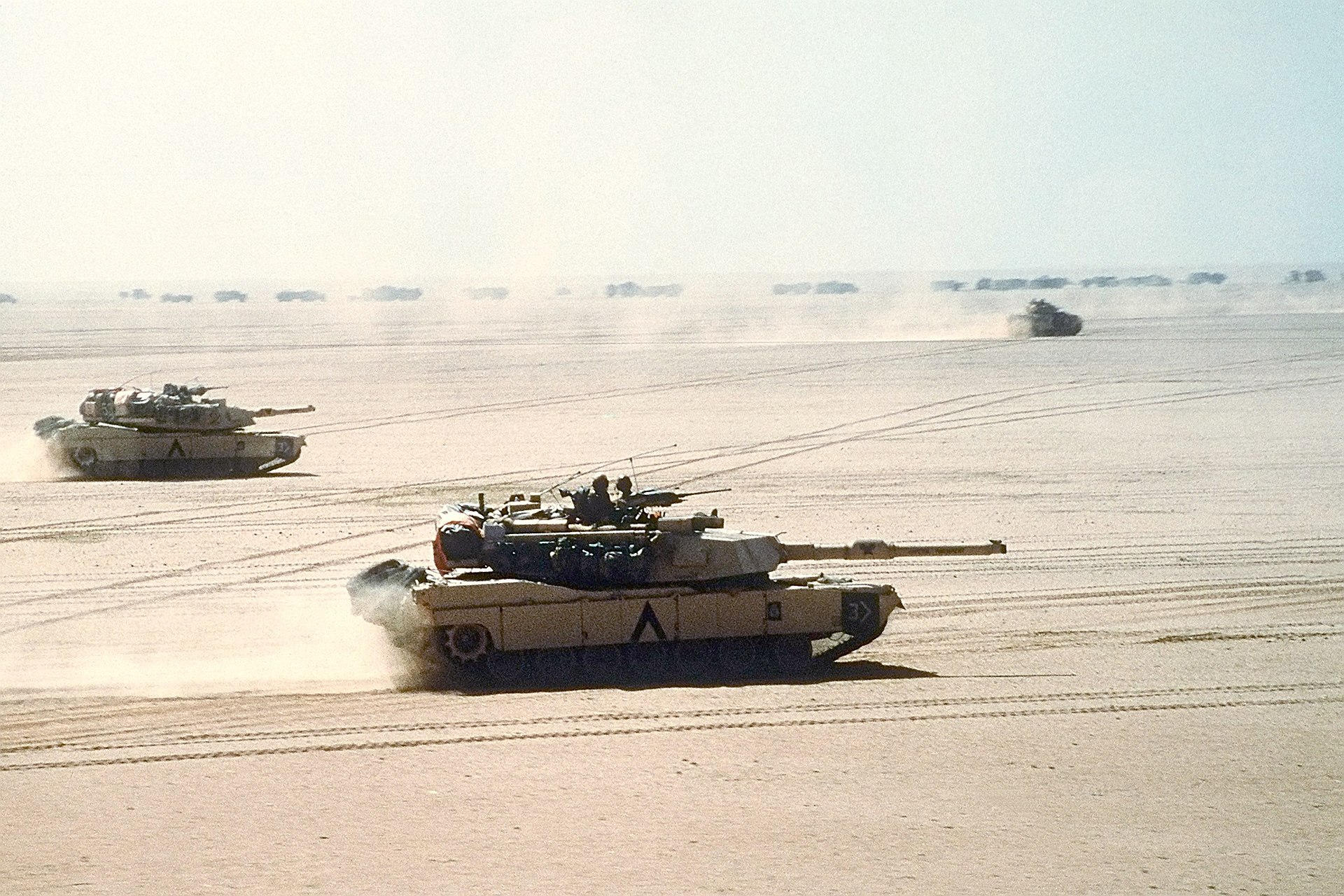The day after the Battle of 73 Easting, which has become known as the “the last great tank battle of the 20th century,” the US 1st Armored Division fought another major tank battle, one that has gone down in history as one of the largest tank battles to ever take place.
The Battle of Medina Ridge took place in Iraq on February 27, 1991, during the Gulf War.
The Gulf War
The Gulf War began after Saddam Hussain, the president of Iraq, invaded Kuwait in August 1990. The United Nations Security Council issued Iraq a deadline to leave Kuwait or face hefty military action. Saddam Hussain failed to meet this deadline, so coalition forces began a major aerial and naval bombardment of Iraqi forces in the region.
This bombardment, which started on January 17, 1991, marked the beginning of the Gulf War. It lasted for five weeks and was followed by a ground assault. The bombardment was so effective that the ground assault lasted just 100 hours before a ceasefire was signed. Although it was over in a flash, the assault was the setting for some of the biggest tank battles in history, including the Battle of 73 Easting, the Battle of Norfolk, and the subject of this article; the Battle of Medina Ridge.
Ground assault
As swarms of coalition vehicles moved into Iraq only light resistance was encountered, with thousands of Iraqi troops unwilling to fight after weeks of bombardments. However, these were mostly poorly trained and unmotivated troops placed in front of Iraq’s more dangerous force, the Republican Guard.
The Republican Guard was extremely well trained and under the direct control of Saddam Hussain. Receiving much better pay and equipment compared to other Iraqi forces, these troops were the coalition’s biggest concern.
By the 27th of February, the coalition had already made huge progress through Iraq, capturing thousands and winning several key battles. On this day the US 1st Armored Division arrived at the seven-mile-long Medina Ridge. Unbeknownst to them, the ridge was hiding an enormous force from the elite Medina Republican Guard Division.
Battle of Medina Ridge
350 M1A1 Abrams main battle tanks rolled up onto the Medina Ridge at about mid-day. Overcast and rainy weather meant visibility was extremely limited so, at the top of the ridge, US tankers used their advanced optics to cut through the hazy air. Looking down, they saw what they were looking for: Iraq’s Republican Guard.
They had a mix of T-72 and T-62 tanks and were completely unaware of the US presence.
The Iraqi troops had set up a reverse slope defensive position, which can be used to negate an enemy’s advantages of longer-range weapons and force them to leave cover to engage. However, on this occasion, Iraqi forces had made a fatal error and dug in their tanks too far from the ridge. This meant their guns were unable to reach the ridge, but the longer-ranged M1A1’s guns could reach them.
The US tanks selected their targets and began opening fire, causing immediate carnage down below. They quickly realized that they were out of range of the Iraqi tanks, so they stopped their advance and took advantage of their position. The Iraqi tankers scrambled to fire up their tanks and tried to fire back at the Americans, but they were out of range and virtually invisible to them on top of the ridge.
Without any accurate return fire, the 350 American tanks had free pickings on the enemy.
As if this wasn’t enough, UH-64 Apache helicopters arrived and started launching Hellfire missiles at the Iraqi tanks. In addition, A-10 Warthogs claimed a number of enemy tanks from their deadly strafing runs.
An Iraqi artillery battery began opening fire on the US tanks, but these too fell short. While, with corrections, this artillery was more than capable of reaching the Americans, the corrections never came due to the chaos and poor visibility.
The US’ own artillery was able to locate the positions of the Iraqi artillery pieces and began counter-battery fire, quickly silencing the only enemy weapons capable of doing damage.
After two hours the battle was over. In that time, US forces managed to destroy 186 Iraqi tanks and almost 200 more armored vehicles and artillery pieces. In return, the US lost four tanks, an A-10, two attack helicopters, and two infantry fighting vehicles. There is speculation that the destroyed US tanks were hit by friendly fire.
The battle was one of the final large-scale confrontations of the Gulf War and was soon followed by a major Iraqi retreat. This effort was hampered by bombings and attacks by coalition forces. Coalition forces were so dominant that an offer for a cease-fire was drawn up, in part to address fears of a negative public reaction for continuing to attack an already devastated enemy.
